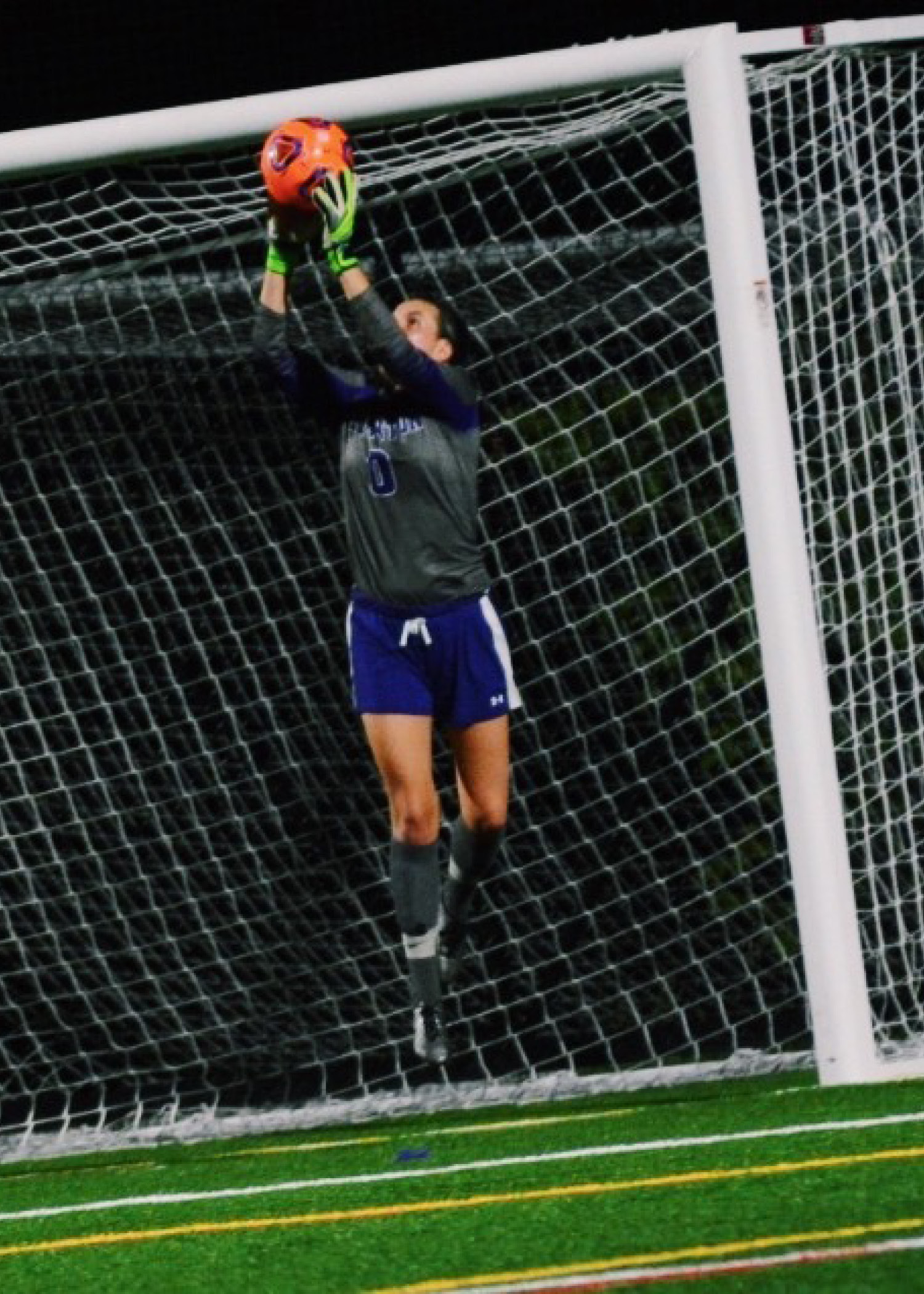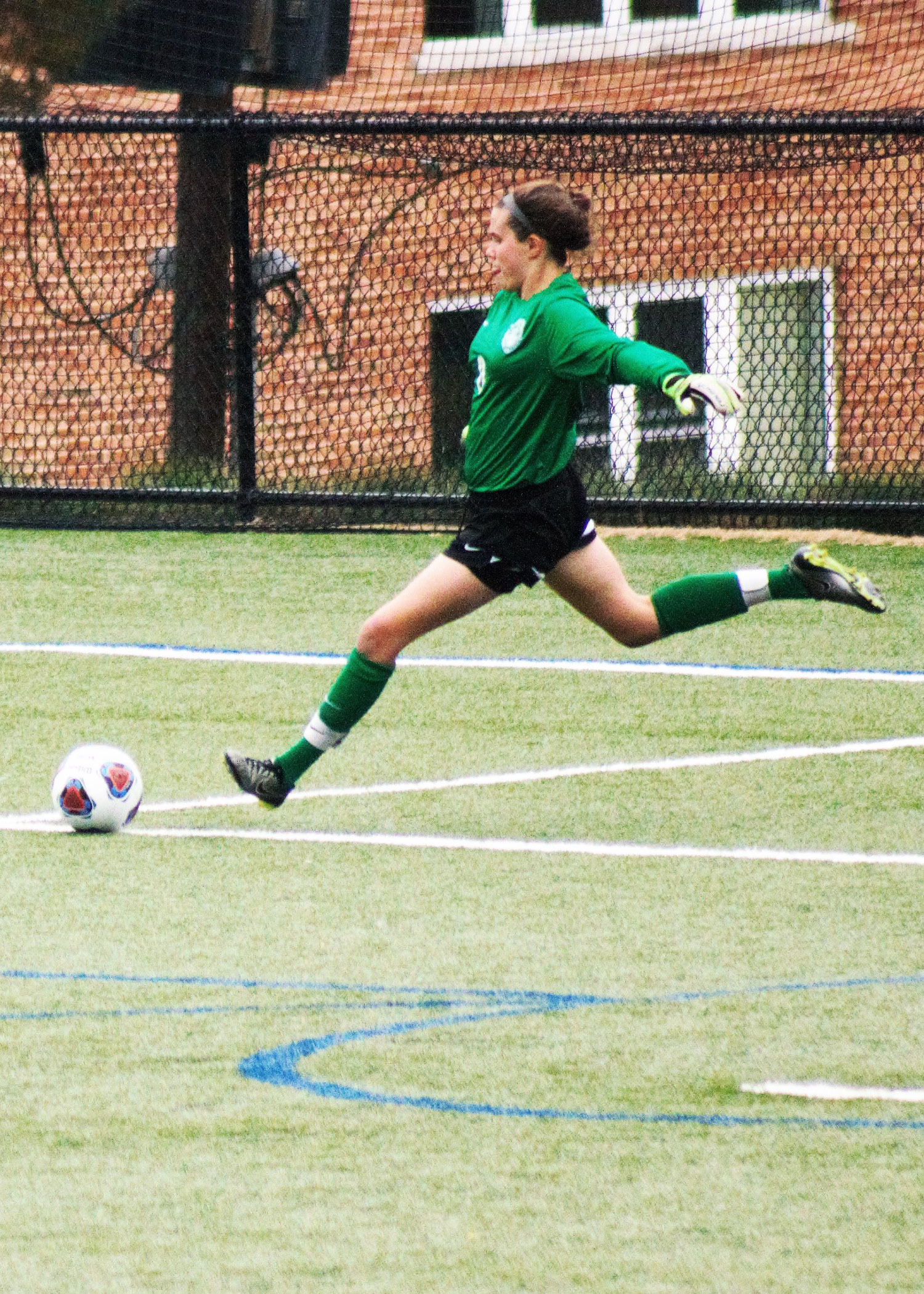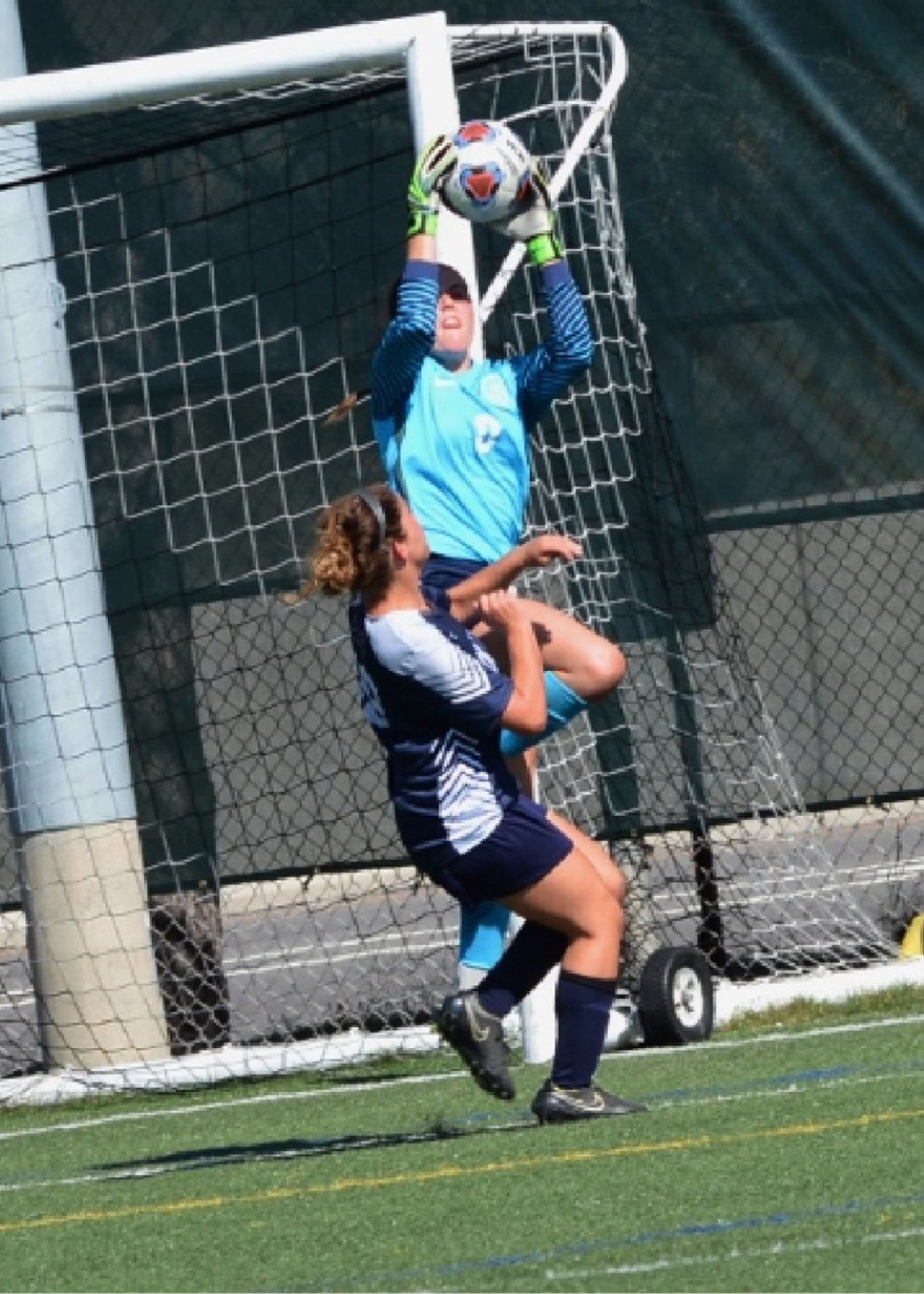The US Men’s National Team has advanced out of the group stage of the FIFA World Cup. And that’s in large part, thanks to goalkeeper, Matt Turner. Turner has only allowed one goal through three games which came from a Gareth Bales penalty kick.
In the sport of soccer, the position of goalkeeper is both unique and challenging. The goalie is the final defense between an opponent and a goal, facing more pressure than arguably any other player. Because of these distinctive demands, the injuries to a goalkeeper tend to also be unique.
For this special goalkeeper edition of our soccer stories, EXCEL Old Tappan physical therapist, and former collegiate goalkeeper, Colleen Berry, PT, DPT, will be discussing the most common injuries to soccer goalies and her own personal experiences.
I became a goalie in third grade when my team kept losing. My coaches were sorting through all the players to see who would fit. I went in and we won our first game of the season. I never left the goal after that! I always loved the thrill of making a bit save like on a breakaway or free kick.
While I loved being a goalie, I also sustained some injuries along the way. Most goalkeeper injuries are a result of a collision. It could be from a forward on a breakaway, a defender on your own team scrambling for the ball, or even from the posts of the goal frame itself. Goalies aren’t afraid to risk their body to save the ball which can lead to injury.
In the summer leading up to my junior year of high school, I collided with my defender who was trying to stop an opposing forward on a breakaway. I came away from the collision with a “greenstick” collarbone fracture. The collarbone is highly susceptible to injury and depending on the location and severity of the fracture, can be a fairly involved recovery. Fortunately, my fracture was minor and after wearing a Figure 8 shoulder brace for a few weeks, I was cleared in time to play my junior high school season.
Concussions can also be the result of a collision, like we saw with Iranian keeper, Alireza Beiranvand. It is a very common injury in the goalkeeping world. I sustained a concussion my freshman year of college. On my very first day of college practice, I was knocked in the head with a ball and sustained a minor concussion. Then, as I was sidelined, I was standing neat the goal when I was hit in the head with a ball that ricocheted off the post which prolonged by recovery time.
Collisions can also cause fracture injuries. Fractures can occur anywhere in the body, but for goalies they typically occur in the shin bones, such as the tibia or fibula, or in the arms, like the humerus, radius or ulna. Los Angeles FC goalie, Maxime Crepeau, recently sustained a scary injury during the MLS Championship. Goalies are taught to protect their body with their leg while defending a breakaway. Unfortunately for Crepeau, when he stuck his leg up the collision resulted in high velocity impact to the lower leg bones and a very serious injury.
Common injuries that are unique to goalies are jammed fingers. Jammed fingers typically result from catching a ball with extended fingers which can cause the ligaments of the fingers to sprain. I dealt with multiple jammed fingers due to catching the ball incorrectly or not reacting in time to get my hands in the proper position to catch the ball. One technique I tried to help prevent jammed fingers was using goalie gloves that have finger protectors to resist the fingers from going into hyperextension. Jammed fingers are very common and require immobilization to heal.
Another injury that is common to goalkeepers are muscle strains, especially quadriceps strains. In slower games, goalies spend a lot of time standing around, watching the game, and then are occasionally required to take goal kicks and punts. The prolonged standing followed by the high velocity power generated to kick the ball can put a lot of stress on the quadriceps and lead to muscle injury.
One of the biggest challenges for a goalie to return to play after injury, is getting comfortable and confident being back in the goal. Most injuries occur due to high impact collisions. So personally, my biggest setback after my injuries was getting over the fear of another collision. It is difficult to feel comfortable getting back in front of another breakaway after you have been sidelined. It takes time to regain the sense of confidence, and some goalkeepers may change the way they approach certain scenarios to protect themselves to a greater extent. Goalies must work through their fear and continue to be confident in protecting the goal and themselves.
My injuries and experience as a goalkeeper definitely led be down the path to become a physical therapist. I always had a hard time coming to terms with being injured and on the sideline. I learned how much PT helped me get back to playing without restrictions, which made me want to help people in the future. I still use some of the drills I did as a goalie in some of my patients’ programs now!



Colleen Berry earned both her bachelor’s degree and Doctor of Physical Therapy degree from the University of Scranton in Pennsylvania. While completing her undergraduate studies in Exercise Science, Colleen also played goalie for the women’s soccer team. She was named an All-American her junior year after starting every game for the Royals. Learn more about Colleen.

